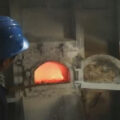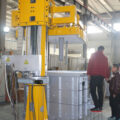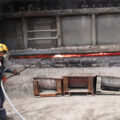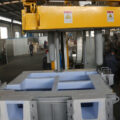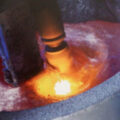Methods Of Degassing In Foundry main include flux refining and degassing with inert gas. Inert gas is continuously blown into the melt, and the refining method in which the oxidized inclusions and hydrogen are brought to the liquid surface during the floating of the bubbles is called inert gas refining. The reason why blowing inert gas into the melt can remove slag is because the blown inert bubbles can absorb the oxidized inclusions in the melt and bring them to the liquid surface during the floating process. This metal degassing method in foundry is the flotation slag removal method.

Methods Of Degassing In Foundry
Since the inert gas bubble adsorbs the oxidized inclusions in the melt, it can reduce the total surface free energy of the system, so this adsorption can happen automatically. The smaller the surface tension between the inert gas and the inclusions, and the greater the surface tension between the melt and the inert gas and the interface tension between the melt and the inclusions, the stronger the slag removal ability of this inert gas.
When using inert gas for refining, the flux should be evenly sprinkled on the liquid surface. This is because after the inert gas bubble brings the inclusions to the liquid surface, if there is a flux layer on the liquid surface at this time, the inclusions will enter the flux and become slag, which is easy to be pulled out. Otherwise, the inclusions with a larger specific gravity will fall into the molten aluminum again, and the inclusions with a smaller density will form scum on the liquid surface, which is difficult to separate from the molten aluminum. When these scums are pulled out, a lot of molten metal will be brought out.
The reason why blowing inert gas into the melt can be degassed is because there is no hydrogen in the inert gas bubble blown into the melt, and its hydrogen partial pressure is zero, and the hydrogen partial pressure in the melt near the bubble is much greater than zero. Therefore, there is a hydrogen partial pressure difference between the inside and outside of the bubble. Under the effect of this partial pressure difference, the hydrogen atoms in the melt diffuse to the bubble interface, and recombine into the bubble at the interface. The gas will stop when the partial pressures inside and outside the bubble are equal. The hydrogen entering the bubble escapes into the atmosphere as the bubble floats up. In addition, during the floating process of the bubbles, the tiny molecular hydrogen bubbles suspended in the melt and the gas in the inclusions can also be brought out of the liquid surface by flotation, so as to achieve the purpose of degassing.

